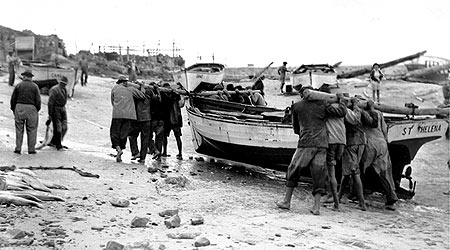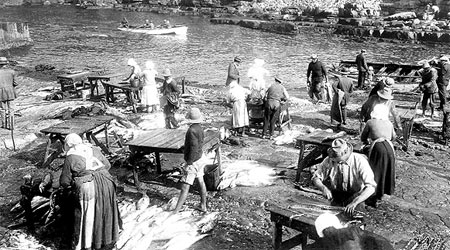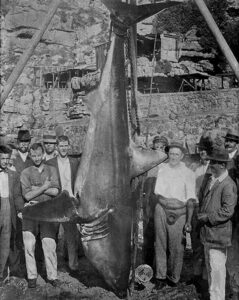Where is the Old Harbour
The Old Harbour Museum is ±120km South East of Cape Town in the Overberg region of the Western Cape, situated on the coast, in the heart of Hermanus.
The Old Harbour
People were drawn to Hermanus since about 1855 by the plentiful fresh water and abundance and variety of fish. The Old Harbour provided a safe shelter for the small fishing boats and the town originally developed around this (harbour)area. The return of the boats to the inlet at the Old Harbour was the event of the day for more than a century. The fishermen often had to ride outside the harbour in heavy seas, waiting for a break between swells before they could row in their small boats.

“Visbaai”
Large crowds of local residents used to gather at “Visbaai” (as the Old Harbour was known), to watch this daily event of fish being carried ashore, gutted and sold while the boats were lifted and put on the turning-stone before being carried up the slipway by 16 men. Some fish were salted and packed in crates for transport to other towns. Snoek and harders were salted and dried on the “bokkom” stands in the harbour or in the backyards of the fishermen.
As the fishing industry in “Visbaai” grew, so did the need to make the harbour safer. A breakwater was built in 1904. A crane was built to lift the boats, but it proved unsuccessful. When the first boat was lifted it was completely crushed and after a second attempt, the crane was best abandoned. The fishermen erected stone huts with iron roofs in which to store their oars, sails, fishing tackle, etc. Brine tanks were built in which to salt the fish before drying.
The women contributed by gutting and cleaning the fish on wooden tables. The fish offal was put into large baskets and discarded into the sea, which attracted a lot of fish. As the wooden tables were often washed into the sea by the waves, cement tables were built in 1936.

The smell at “Visbaai” caused a lot of trouble for the council. Complaints of unhygienic conditions led to stricter rules. The offal had to be carried away and discarded into the sea off “Frans se Klip” and the pickle had to be carried and discarded into the sea.
The SAR & H took over the jurisdiction of the Old Harbour in 1919 and remained responsible for it until 1950 when it was officially proclaimed a harbour.
Sharks
“Visbaai” was a popular shark catching spot. It was a very popular form of entertainment and everyone would gather to watch. This activity was specially made popular by Bill Selkirk, also known as the “shark enemy” of the world. He caught a world record shark in April 1922. It took him 5.3/4 hours and 1 kilometre up and down the rocks between the Old Harbour and the Marine pool to land this shark. Selkirk, more than anybody else, put Hermanus on the world’s fishing map. He had a great sense of adventure, probably a characteristic he inherited from one of his forefathers, Alexander Selkirk (better known as Robinson Crusoe!). The jaws of this world record shark is also on display in the Selkirk Room of the De Wet’s Huis Photographic Museum.

